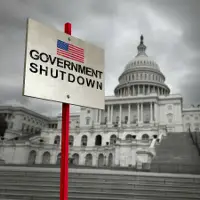|

The Facts and Consequences of the Federal Government Shutdown
January 28, 2019
The longest shutdown in U.S. Government history lasted 35 days and ended with the signing of a continuing resolution that doesn't solve the problem. What Congress approved and President Trump signed keeps the government open through February 15.
Here's what happened while the government was shut down and what might happen as a result:

- Roughly one-quarter of the federal government–about 800,000 federal workers–were not paid during that time; rather, they received IOUs. The deal just approved by Congress and the Presidents provides funding to pay up on those IOUs. The agreement also includes a guarantee to provide back pay for any future government shutdowns. The deal doesn't include federal contractors, people who aren't full-time employees with no end date on their job descriptions. A bill to provide back pay for contract employees is working its way through Congress.
- Many of these workers found themselves unable to pay bills, such as rent and mortgage payments and credit card payments. Some news outlets reported on some of these people, and some reports resulted in crowd-sourced funding campaigns to help some people. Some landlords agreed not to ask for rent payments during the period.
- Largely exempt from the shutdown were Medicaid, Medicare, and the Department of Health and Human Services. However, Congress did not reauthorize funding for the Temporary Assistance for Needy Families program, which sends block grants to states to pay for child care, welfare, and other forms of assistance. Most states had enough money to pay for these programs while the federal government was shut down but only by tapping into reserves. Similarly, the Department of Agriculture's Supplemental Nutrition Assistance Program, whose allocations include food stamps, will run out of funding on March 1.
- The federal government's shutdown meant no funding for the Homeless Assistance Grant program, meaning that many programs designed to help homeless people find food, shelter, and work struggled mightily to make ends meet. Also left in the lurch were many federally funded shelters for veterans and victims of domestic abuse.
- Air traffic controllers and employees of the Transportation Security Administration were one of several sectors of the federal workforce who were required to show up for work even though they weren't getting paid. The number of air traffic controllers and TSA employees calling in sick as the days went by increased so dramatically that many flights were delayed.
- Tens of thousands of employees of the Border Patrol were working without pay. The same was true on a smaller scale for employees of the FBI and the Secret Service. Also affected were workers at federal prisons.
- Federal inspection of food was sporadic for a time during the early days of the shutdown. Inspection of high-risk foods, such as meat, poultry, eggs, and vegetables, carried on; inspection of low-risk foods, such as packaged crackers and cookies, was interrupted but has recommenced.
- The Internal Revenue Service had just more than half of its workers showing up for work, many without pay. But the lack of nearly 43 percent of the workforce has created a backlog of work. Tax season is officially open, and the traditional deadline of April 15 has not changed. Whether everyone who applies for a refund gets on in a timely fashion remains to be seen.
- The National Zoo and the museums of the Smithsonian Institution will reopen on January 29. All have been closed since January 1, when funding reserves ran dry. With many students off school and many families traditionally planning holiday visits to the Washington, D.C., area during this time, the Zoo and the Smithsonian museums usually see a large amount of revenue. The Smithsonian has already reported expected losses of $3 million, based on previous year's figures.
- Getting paid fully during the shutdown were many other federal employees, including members of Congress and the President. Many members of Congress donated their salaries to charities.
- National parks in many parts of the country suffered from vandalism because park staff were not on sight to prevent it.
- A sticking point for negotiations between President Trump and Congressional Democrats, who now control the House of the Representatives, was the President's demand for $5.7 billion to fund his long-promised border wall along the border between Mexico and the U.S. Projections by federal economists are that the federal government lost more than $5 billion during the 35 days of the shutdown. The continuing resolution approved by Congress and signed by the President did not address the border wall funding issue.
|
Social Studies for Kids
copyright 2002–2023
David White |





